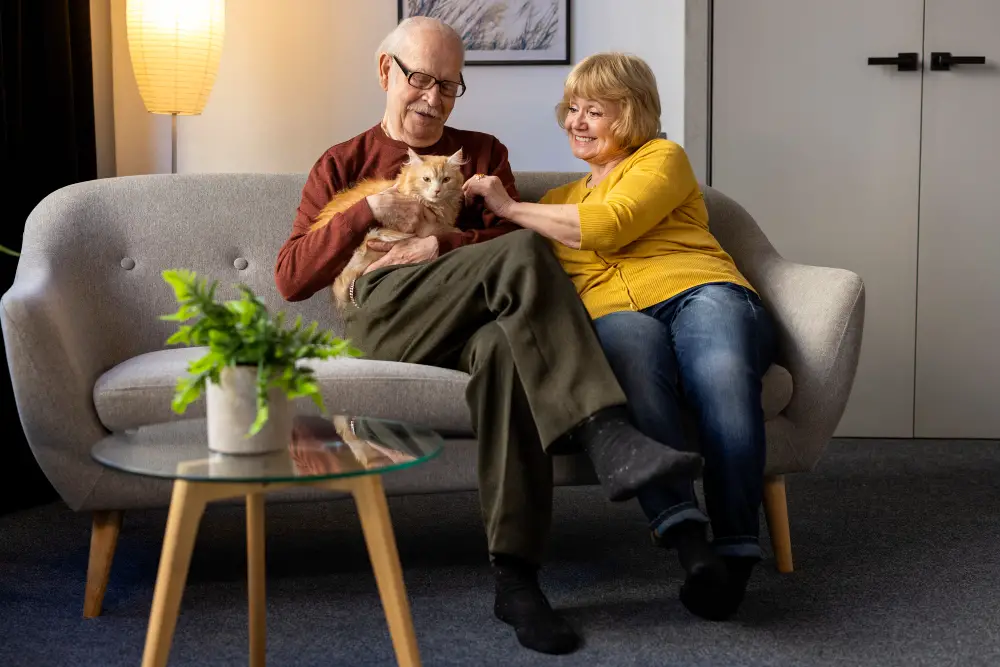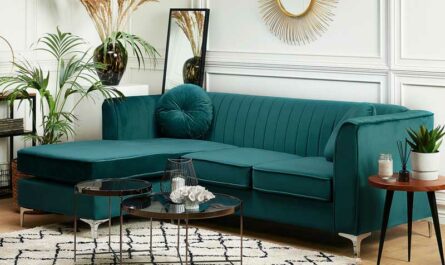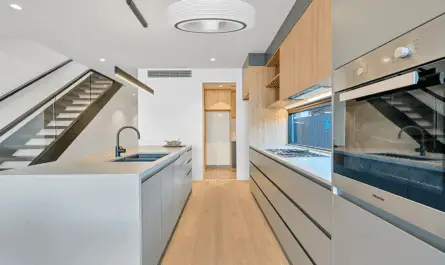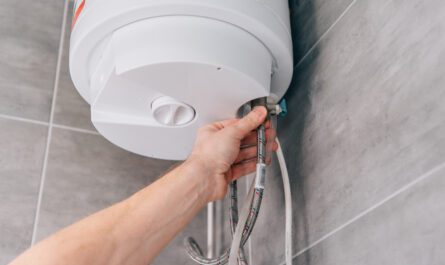Senior adults are at a significantly higher risk for accidents and injuries at home due to age-related issues like decreased mobility, vision changes, slower reflexes, and sometimes cognitive decline. Millions of elderly people are treated in emergency departments yearly for injuries that occur around the home. The good news is that many of these accidents might be prevented by following some general safety and accessibility guidelines when setting up a home environment. This article reveals an overview of home safety for seniors in key areas like lighting, flooring, and kitchen and bathroom spaces.
Lighting
Ensuring adequate lighting throughout the home is a simple yet crucial way to improve safety for senior residents. As we age, our eyesight deteriorates, requiring brighter ambient lighting to see clearly. Tripping hazards can also be reduced by effectively lighting halls, bedrooms, bathroom spaces, and stairwells.
Consider installing overhead lighting as well as lamp lighting to minimize shadows and allow safer mobility. Night lights placed strategically in bedrooms, hallways, and bathrooms are also extremely helpful when seniors get up at night. Ensure all light switches are easy to access, and consider clap-on lighting for hands-free operation.
Flooring
Flooring choice plays a significant role in slip and fall risk for the elderly. Loose rugs or carpets without grippers can easily slide underfoot and should be avoided. Install shower mats, bath rails, and non-slip adhesive wall & floor tiles in bathrooms to give better traction. Securing the edges of area rugs with double-sided tape also helps prevent tripping.
For seniors with mobility issues, having transitions between surfaces – say, carpeted hallways to tiled kitchens – on the same level is ideal. Install grab bars and railings to give additional support when moving about the home.
Kitchen
The kitchen deserves special attention, as many potential hazards exist – from slippery floors to hot surfaces. Store dishes, foods, and other frequently used items within easy reach so seniors don’t have to bend or reach up high. Have a sturdy step stool handy for safely retrieving things from upper shelves and cabinets.
Evaluate countertop appliances to make sure buttons are large, and controls are simple enough for an elderly person to operate confidently. Oven mitts should be worn when cooking, and bright reminders can be put up to wipe spills immediately after they occur.
Bathroom
Among all rooms, the bathroom demands maximum senior-friendly modifications like grab bars, anti-slip flooring, and adequate lighting. Grab bars installed near the tub, shower, and toilet provide stability when lowering down or getting back up. Non-slip rubber mats in the tub prevent slips that lead to traumatic falls.
Consider using a plastic chair in the shower for additional safety. Leave night lights on in case the bathroom is used after dark. An elevated toilet seat with armrests also facilitates safe and easier usage.

Staying Safe in Old Houses
Many of the older homes across the country unfortunately pose several safety risks and accessibility issues for elderly residents. A major obstacle in these old constructions is the lack of grab bars in bathrooms. The stark absence of any wall reinforcements makes installation incredibly difficult and expensive, if not impossible! Without proper grip support near toilets, tubs, and showers, bathrooms become danger zones with hard, slippery surfaces and no balancing aid in sight. The risk of falling escalates as senior people struggle to lower themselves down or lift back up. And even small slips may cause major traumatic injuries when bones become frail.
Another big challenge is inadequate lighting, which strains aging eyes that rely heavily on well-lit spaces for navigation and safe mobility. Dark bedrooms, hallways with shadows, and uneven outdoor pathways filled with cracks all impede clear vision, which is critical to preventing trips and falls. Bright overhead and task lighting are essential, but older homes often lack sufficient electrical capacity and fixtures to adequately illuminate every room.
Steep, winding staircases or multiple stories without bedroom/bathroom access on the main level also hamper easy movement for those with limited strength and stamina. Seniors think twice before attempting stairs out of fear of losing balance or suffering exhaustion. Something as simple as getting to the laundry room in the basement becomes an insurmountable chore, diminishing independence considerably.
Suggested Solutions
While renovating old houses to better suit seniors’ needs is an expensive proposition, several simpler changes can make a big difference. Grab bars can be installed more easily if wall studs are located precisely and reinforced before securely attaching grip bars. Lighting is relatively straightforward to upgrade with ample high-lumen LED fixtures. Stair lifts or home elevators are a substantial but often necessary investment to avoid isolation and promote mobility between floors.
Maintenance issues like loose handrails, uneven tiles, slippery surfaces, or damaged floorboards should be addressed promptly before they turn into safety problems. With some foresight and proactive enhancements, older homes can indeed adapt better for aging adults who are no longer as sure-footed and flexible as the younger occupants.
Home Safety for Seniors: Checklist
Putting together a home safety checklist is highly recommended for seniors and caregivers.
- Walk through the home monthly, looking for potential stumbling blocks like books, shoes, cords etc., clearing passages and high-traffic areas.
- Check floors for lifted carpet edges, damaged tiles, or boards that need fixing.
- Look at lighting arrangements to spot dark areas and arrange for replacement bulbs where needed.
- Make sure all electrical and extension cords are tucked away safely and out of walking paths.
- Use child-proof latches on cabinets containing chemicals, cleansers, or medications for external use only.
- Label medications clearly and store them in an organized manner.
- Cleaning products like bleach, ammonia, etc. are best kept locked away when not in use.
- Test smoke detectors monthly and ensure carbon monoxide detectors are installed.
- Place medical alert phone numbers visibly on the refrigerator and let emergency services know if a senior is living alone.
These simple checks go a long way in identifying risks before accidents occur.
Extra Tips for Seniors Using Wheelchairs
Elderly people in wheelchairs have some unique safety needs that deserve special attention beyond conventional age-proofing advice. At home, all rooms must have adequate maneuvering space for backing up and turning a wheelchair without bumping into furniture or tight corners. Hallways must have an absolute minimum width of 36 inches, but wider is better for easier navigation. Similarly, leaving ample leg room under sinks, tables and desks allows wheelchairs to pull up comfortably. Consider a wheelchair cover in case of infrequent use of the mobility aid or storing it outside.
Doors deserve a close look, too – thresholds should be flush with the floor for smooth transitions without jarring bumps. Automatic door openers, whether powered or manual, are extremely helpful as reaching back to pull open doors while seated can be challenging. Simple lever-style handles are easier to grip and turn than conventional knobs.
In bathrooms, a roll-in shower with a fold-down seat and grab bars installed low and high allows self-bathing while seated. Adjustable height sinks and toilets positioned higher make transfers simpler and reduce strain for those with limited mobility. Wall reinforcements are vital safety backups when lowering down or standing back up.
Other helpful aids for aging people with limited mobility are touch lamps, phone extensions, elevated key hooks, and enhanced seating to reduce the need for repetitive standing. Proper home modifications truly empower seniors in wheelchairs to enjoy greater functionality while also remaining safe.
Conclusion
Home injuries remain a foremost concern for senior wellbeing. While some amount of age-related decline is expected, proactively adapting the home environment can prevent many mishaps. Concentrate on removing hazards that lead to loss of balance, burns, strains, etc. Seek help from occupational therapists if major modifications like widening doorways, adjusting storage heights, or installing elevators are needed. Input from physical therapists is also valuable after an incident to promote strength and relearn skills through recovery.
Paying attention to home safety for seniors starts with ensuring their living space is safe, comfortably accessible, and geared towards independence. After a lifetime of cherished memories made under one roof, the elderly deserve to continue residing at home without risk of foreseeable harm.








